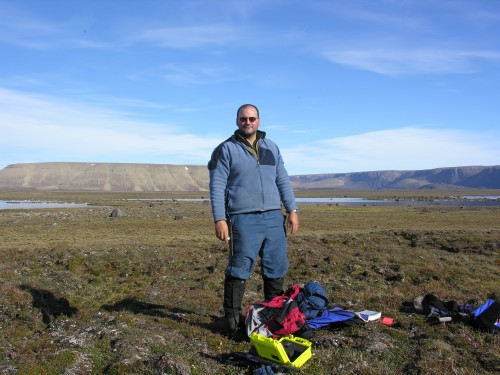Research partnership examines eco-friendly gas station clean-up
University of Saskatchewan and SIAST researchers, in partnership with Federated Co-operatives Limited (FCL), have been awarded a federal NSERC grant of $750,000 over three years to advance eco-friendly remediation techniques and technology, making it easier to clean up contaminated soil at former gas station sites.
By Kris Foster Researchers will explore how best to advance soil remediation techniques and technology previously developed by FCL in collaboration with U of S soil scientists. If successful, the use of naturally occurring bacteria and fungi to break down hydrocarbons at contaminated municipal "brownfield" sites—of which there are about 30,000 across Canada—could reduce clean-up costs by more than 30 per cent.
Researchers will explore how best to advance soil remediation techniques and technology previously developed by FCL in collaboration with U of S soil scientists. If successful, the use of naturally occurring bacteria and fungi to break down hydrocarbons at contaminated municipal "brownfield" sites—of which there are about 30,000 across Canada—could reduce clean-up costs by more than 30 per cent.
"This collaborative research and training project will provide a new cost-effective approach to bio-remediation of petroleum-impacted soils with less disruption to surrounding business than excavation-based clean-ups," said U of S soil scientist Steven Siciliano, a world expert on contaminated soils. "Through this exciting public-private partnership, we will combine our various skills and expertise to help solve this critically important environmental problem."
Siciliano and U of S colleagues Richard Farrell and Derek Peak will provide the expertise and advanced techniques to adapt and refine the technology, while the SIAST BioScience Applied Research Centre lab will evaluate its application across many sites.
"The SIAST BioScience Applied Research Centre (SBARC) laboratory will develop and test lab-based models for the remediation technology," says Blaine Chartrand, principal investigator at SBARC. "The PhD students will gain practical knowledge from the SIAST students, who in turn will learn some of the fundamental science behind bioremediation technologies from the PhD students."
A total of 18 SIAST students, three U of S PhD students, and one U of S post-doctoral fellow will be involved in the research conducted at the Canadian Light Source synchrotron, the SIAST lab, U of S laboratories, and former Co-op gas station sites.
FCL is also providing the research team with $60,000 cash and $435,000 in-kind contributions.
"FCL is pleased to build upon its remediation research through this collaboration with the University of Saskatchewan and SIAST," says Trevor Carlson, FCL's Environmental Affairs Director. "We stand on the leading edge, bringing proven theoretical knowledge into a practical setting to help develop standard practices for our industry. This technology will enable FCL to remediate contaminated sites without negatively impacting the environment, transferring contaminated soil to a landfill or disrupting business activities on site."
Traditional remediation methods involve excavating impacted soils and moving them to a landfill or treatment facility. This is costly, prohibits use of the site during the process, and creates some risk of exposing people to contamination.
The project is funded through NSERC's College-University "Idea to Innovation" program which funds research and development projects with recognized technology transfer potential.

